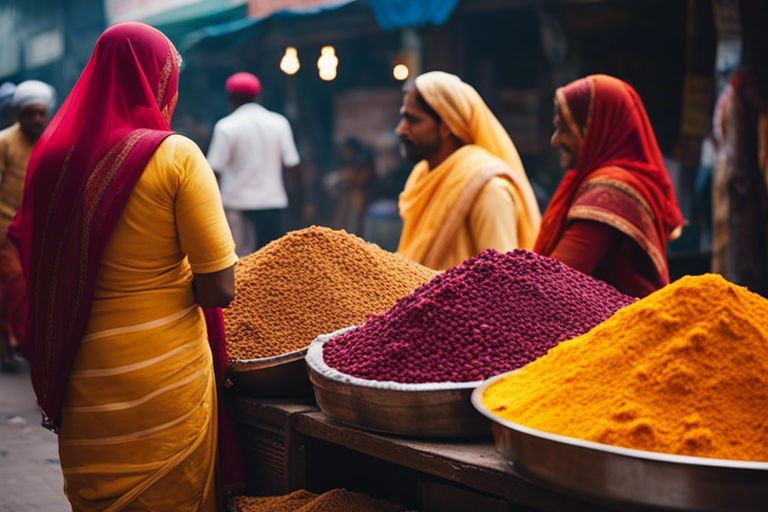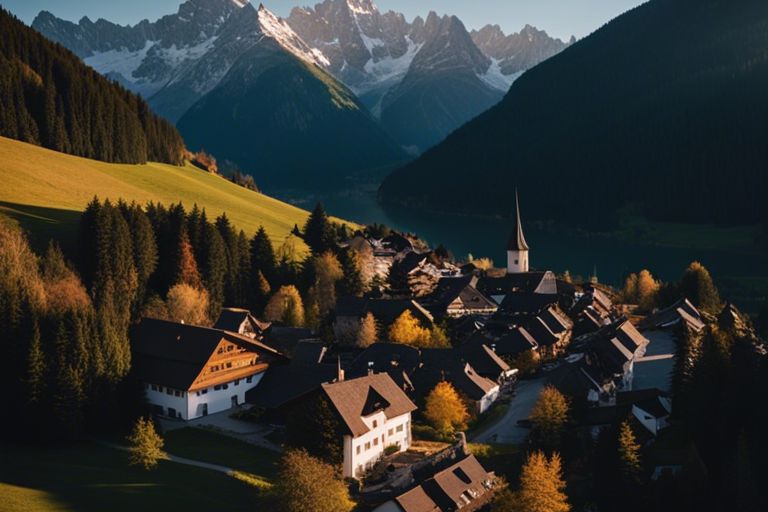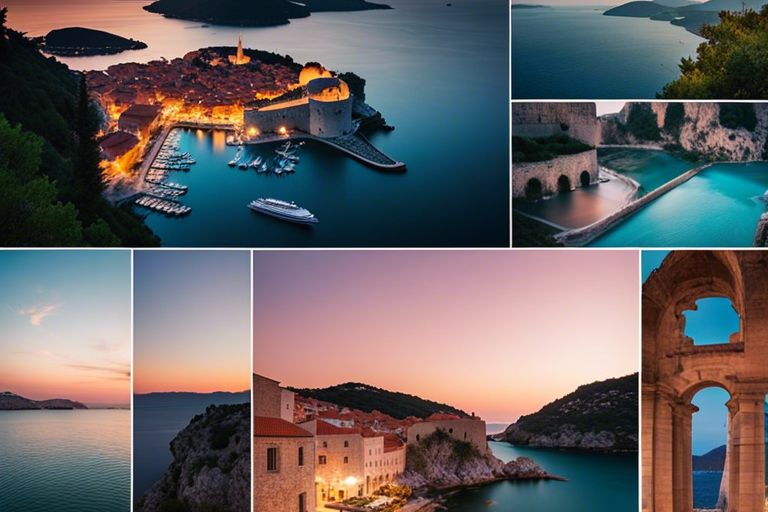Embark on a mesmerising journey through the diverse cultural tapestry of India, where every corner tells a story of history, tradition, and vibrant heritage. From the majestic palaces of Rajasthan to the serene backwaters of Kerala, India offers a plethora of experiences for travellers seeking a deep examine its rich culture. In this guide, we will explore the must-see attractions and activities that will make your cultural tour of India a truly unforgettable experience. Get ready to indulge your senses in the sights, sounds, and flavours of this incredible land.
Key Takeaways:
- Diverse Cultural Experiences: India offers a wide range of cultural experiences from ancient temples to vibrant festivals, providing visitors with a rich tapestry of traditions to explore.
- Architectural Marvels: The country boasts stunning architectural feats such as the Taj Mahal, Jaipur’s Pink City, and the intricate sculptures of Ellora and Ajanta Caves.
- Culinary Delights: Indulge in the diverse and flavourful cuisine of India, from spicy curries in the north to coconut-infused dishes in the south, offering a taste sensation for every palate.
- Colourful Festivals: Experience the vibrancy of India through its numerous festivals like Holi, Diwali, and Durga Puja, where streets come alive with music, dance, and dazzling decorations.
- Hospitality and Warmth: The hospitality of the Indian people is renowned worldwide, with locals welcoming visitors with open arms, ensuring a memorable and enriching cultural experience.
Historical Landmarks and Architecture
The Majestic Taj Mahal
The Taj Mahal, located in Agra, is an iconic symbol of India’s rich history and culture. Built by Emperor Shah Jahan in memory of his wife Mumtaz Mahal, this white marble mausoleum is a masterpiece of Mughal architecture. Visitors can marvel at its intricate carvings, majestic domes, and beautiful gardens, making it a must-see attraction for anyone visiting India.
Ancient Forts and Palaces
India is home to numerous ancient forts and palaces that showcase the country’s royal heritage. From the majestic Amber Fort in Jaipur to the stunning City Palace in Udaipur, each of these architectural marvels tells a story of India’s past glory. Exploring these historical landmarks gives visitors a glimpse into the opulent lifestyles of Indian royalty and the architectural brilliance of the bygone era.
Spiritual Journeys and Religious Heritage
Sacred Temples of Varanasi
Varanasi, one of the oldest living cities in the world, is a sacred destination for Hindus. It is home to numerous temples, each with its own significance and devoted following. The Kashi Vishwanath Temple dedicated to Lord Shiva is a major pilgrimage site, while the Sankat Mochan Hanuman Temple attracts devotees seeking blessings for strength and protection. A visit to Varanasi is a spiritual experience, with the Ganges River flowing by the ghats where rituals and prayers take place daily.
The Holy City of Amritsar
Amritsar, located in the northern state of Punjab, is renowned for the Golden Temple, the holiest Gurdwara of Sikhism. The sight of the gleaming golden shrine surrounded by the tranquil Amrit Sarovar (Pool of Nectar) is a mesmerising one. Visitors can partake in the langar (community kitchen) where free meals are served to all, regardless of background. The daily ceremony of the Palki Sahib (Palanquin Procession) carrying the Guru Granth Sahib is a sight not to be missed, offering a glimpse into the rich Sikh heritage and traditions.
Amritsar is also the site of the Jallianwala Bagh memorial, a reminder of the tragic events of 1919 when British troops opened fire on a peaceful gathering, resulting in numerous casualties. This poignant monument stands as a symbol of India’s struggle for independence and the sacrifices made during that tumultuous period.
Traditional Festivals and Performing Arts
Experiencing the Colors of Holi
One of the most vibrant and joyous festivals in India, Holi is a celebration of love, joy, and the arrival of spring. During this festival, people come together to throw vibrant colored powders at each other, symbolising the triumph of good over evil. It’s a sight to behold – streets filled with people of all ages, laughing and dancing to traditional music.
Classical Dance and Music
India is renowned for its rich classical dance and music traditions, which have been passed down through generations. From the intricate footwork of Kathak to the graceful movements of Bharatanatyam, each dance form tells a story and evokes a range of emotions. Combined with the soul-stirring melodies of classical music, these art forms provide a window into India’s cultural heritage.
Culinary Exploration
Regional Cuisine and Street Food
India is a diverse country, and this diversity is reflected in its cuisine. Each region boasts a unique culinary tradition that is a delight to explore. From the spicy curries of the south to the rich Mughlai dishes of the north, there is something to suit every palate. One of the best ways to experience the local flavours is through street food. Wander through bustling markets and try popular snacks like samosas, pav bhaji, and dosas for an authentic taste of India.
Tea Gardens and Spice Plantations
India is renowned for its aromatic spices and fragrant teas, which are grown in lush plantations across the country. A visit to tea gardens in Darjeeling or spice plantations in Kerala offers a sensory experience like no other. Learn about the cultivation process, from plucking the leaves to the blending techniques, and sample some of the finest teas and spices straight from the source.
Artisan Villages and Handicrafts
Textile Weaving and Embroidery
India is renowned for its intricate textile weaving and embroidery techniques, which vary from region to region. In villages across the country, you can witness skilled artisans creating stunning fabrics using traditional methods passed down through generations. Be sure to visit places like Varanasi for luxurious silk weaving or Kutch for vibrant and colourful embroidery work.
Pottery and Metalwork
From delicate pottery to exquisite metalwork, Indian artisan villages are treasure troves of traditional craftsmanship. Each piece tells a story of heritage and skill, with techniques honed over centuries. Explore the pottery villages of Khurja in Uttar Pradesh or the metalworking hub of Moradabad in search of unique and beautiful creations to adorn your home.
Pottery in India is not just an art form but an integral part of everyday life. It ranges from functional earthenware to decorative sculptures, each showcasing the craftsman’s mastery of the medium. Metalwork, on the other hand, encompasses a wide range of techniques such as filigree, engraving, and casting, producing stunning pieces of jewellery, utensils, and decorative items.
A Cultural Tour of India – What to See and Do
Embarking on a cultural tour of India promises a journey filled with vibrant experiences and unforgettable sights. From exploring the majestic architecture of the Taj Mahal in Agra to witnessing the traditional dance forms in Rajasthan, every corner of India offers a unique glimpse into its rich cultural heritage. Delve into the bustling markets of Delhi, savour the aromatic spices of South India, and marvel at the ancient temples in Varanasi. Immerse yourself in the diverse traditions, cuisines, and festivities that make India a truly captivating destination for cultural enthusiasts. A trip to India is a tapestry of colours, flavors, and sounds that will leave an indelible mark on your heart and soul.
FAQ
Q: What are some must-see attractions in India on a cultural tour?
A: When visiting India on a cultural tour, some must-see attractions include the Taj Mahal, Jaipur’s Amber Fort, Varanasi’s ghats, Kerala’s backwaters, and the Ajanta and Ellora Caves.
Q: What are some traditional cultural experiences to participate in while in India?
A: Traditional cultural experiences to participate in while in India include attending a Bollywood film screening, trying authentic Indian cuisine, taking part in a yoga or meditation class, and witnessing a traditional dance performance.
Q: How can one ensure a respectful visit to India’s cultural sites?
A: To ensure a respectful visit to India’s cultural sites, visitors should dress modestly, remove shoes when entering temples or homes, seek permission before taking photographs, and refrain from touching idols or sacred objects without permission.
Q: What are the best times of year to visit India for a cultural tour?
A: The best times of year to visit India for a cultural tour are typically during the cooler and drier months of October to March. This period allows for more comfortable sightseeing and fewer disruptions due to monsoon rains.
Q: How can one shop responsibly for souvenirs during a cultural tour of India?
A: To shop responsibly for souvenirs during a cultural tour of India, visitors should prioritise purchasing items directly from local artisans or fair trade cooperatives. This supports the local economy and ensures authenticity in the products bought.






